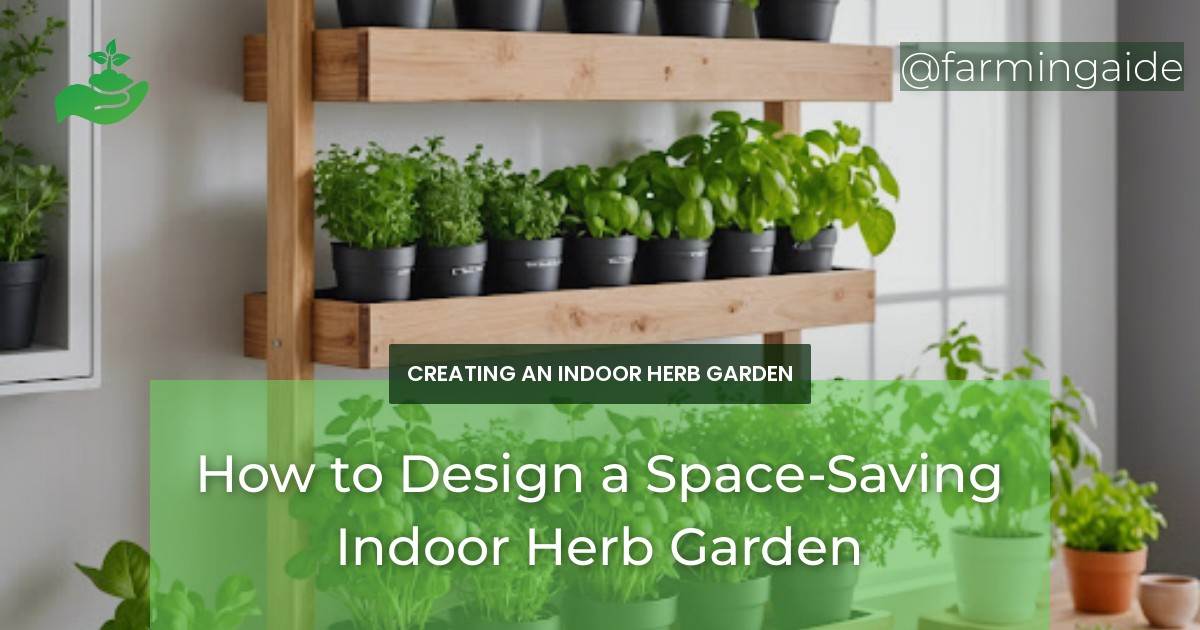Are you tired of sacrificing precious space in your home for a lush herb garden? Look no further! In this comprehensive guide, we’ll show you how to design a space-saving indoor herb garden that’s both functional and beautiful. From choosing the right herbs to innovative space-saving designs, we’ll cover everything you need to know to get started.
Key Takeaways
- Learn how to choose the right herbs for your space-saving indoor herb garden
- Discover innovative space-saving designs for small spaces
- Find out the essential tools and materials needed for indoor herb gardening
- Get tips for maintaining your indoor herb garden, including optimal lighting and watering techniques
- Learn how to harvest and use your homegrown herbs in your cooking
Introduction to Indoor Herb Gardening
Indoor herb gardening is a great way to have fresh herbs at your fingertips, even with limited space. Not only do indoor herb gardens provide a constant supply of fresh herbs, but they also purify the air, improve mental health, and add a touch of greenery to your home. Whether you’re a seasoned gardener or a beginner, indoor herb gardening is a fun and rewarding hobby that can be adapted to any space.
In this article, we’ll explore the benefits and challenges of indoor herb gardening, choosing the right herbs for your space, innovative space-saving designs, essential tools and materials, and tips for maintaining your indoor herb garden.
Benefits of Indoor Herb Gardens
Indoor herb gardens offer a range of benefits, including:
- Fresh herbs at your fingertips
- Air purification and improved air quality
- Mental health benefits from caring for plants
- Added greenery and aesthetic appeal to your home
- Year-round herb production, regardless of the season
Challenges of Small Space Gardening
Small space gardening can be challenging, especially when it comes to indoor herb gardening. Some common challenges include:
- Limited space and light
- Temperature fluctuations
- Humidity and moisture control
- Pest management and disease prevention
- Choosing the right herbs for your space
Choosing the Right Herbs for Your Space
When it comes to choosing the right herbs for your indoor herb garden, there are a few factors to consider. You’ll want to choose herbs that thrive in indoor conditions, are compact or dwarf varieties, and fit your culinary needs.
Popular space-saving herbs include:
- Basil
- Cilantro
- Parsley
- Chives
- Mint
- Thyme
ALSO READ
Factors to Consider When Selecting Herbs
When selecting herbs for your indoor herb garden, consider the following factors:
- Lighting requirements
- Temperature tolerance
- Moisture requirements
- Growth habits and space needs
- Culinary uses and flavor profiles
Innovative Space-Saving Herb Garden Designs
When it comes to designing a space-saving indoor herb garden, there are several innovative solutions to consider. From vertical gardening solutions to compact container gardens, we’ll explore some of the most popular and effective designs.
Vertical Gardening Solutions
Vertical gardening solutions are perfect for small spaces, as they maximize vertical space while minimizing floor space. Some popular options include:
- Living walls
- Trellises
- Vertical planters
ALSO READ
Hanging Herb Gardens
Hanging herb gardens are a great way to add greenery to your home without taking up valuable floor space. Some popular options include:
- Hanging baskets
- Macramé planters
- Wall-mounted planters
Compact Container Gardens
Compact container gardens are perfect for small spaces, as they provide a self-contained herb garden that can be easily moved or rearranged. Some popular options include:
- Window boxes
- Small planters
- Tiered planters
Essential Tools and Materials for Indoor Herb Gardening
When it comes to indoor herb gardening, having the right tools and materials is essential. From must-have gardening tools to suitable containers and soil types, we’ll cover everything you need to get started.
Must-Have Gardening Tools
Some essential gardening tools for indoor herb gardening include:
- Pruning shears
- Watering can
- Fertilizer
- Pest management tools
Suitable Containers and Soil Types
When it comes to choosing containers and soil types for your indoor herb garden, consider the following:
- Well-draining containers
- Soil with good aeration and drainage
- Organic and natural soil amendments
Tips for Maintaining Your Indoor Herb Garden
Maintaining your indoor herb garden requires regular attention to lighting, watering, and pest management. Here are some tips to keep your herbs thriving:
Optimal Lighting Conditions
Most herbs require bright, indirect light to thrive. Consider the following lighting conditions:
- East- or west-facing windows
- Artificial lighting options
- Lighting schedules and timers
Watering and Fertilizing Techniques
Watering and fertilizing your indoor herb garden requires careful attention to moisture levels and nutrient intake. Consider the following:
- Soil moisture monitoring
- Watering schedules and frequencies
- Organic fertilizers and nutrient supplements
Common pests that can affect indoor herb gardens include:
- Aphids
- Whiteflies
- Spider mites
- Mealybugs
Use natural pest management methods, such as neem oil and insecticidal soap, to control pest populations.
Conclusion: Enjoying the Fruits of Your Labor
Congratulations! You’ve successfully designed and maintained your space-saving indoor herb garden. Now it’s time to enjoy the fruits of your labor.
Harvesting and Using Your Homegrown Herbs
Harvest your herbs regularly to encourage bushy growth and prevent flowering. Use your fresh herbs in a variety of dishes, from soups and salads to sauces and marinades.
Expanding Your Indoor Gardening Skills
Now that you’ve mastered the art of indoor herb gardening, consider expanding your skills to other types of indoor gardening, such as:
- Microgreens
- Leafy greens
- Fruiting plants
Remember to keep experimenting, learning, and growing with your indoor herb garden. Happy gardening!


